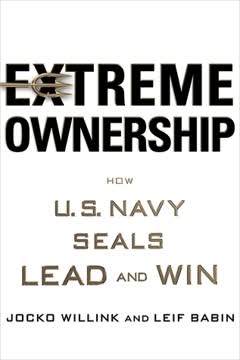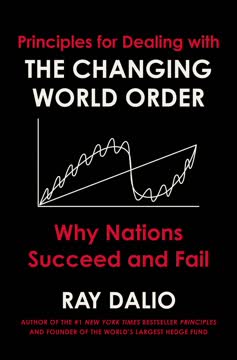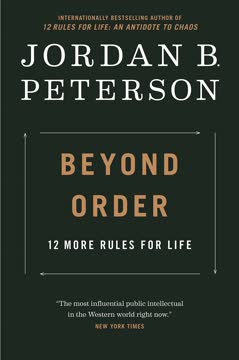نکات کلیدی
1. تسلط بر راه استراتژی از طریق تمرین مداوم و خوداندیشی
"برای درک کامل راه، باید با جدیت تمرین کنید و به روشنگری روحی دست یابید."
بهبود مستمر: مسیر تسلط بر استراتژی نیازمند تعهدی بیوقفه و تمرین مداوم است. این شامل:
- تمرین روزانه در تکنیکهای مختلف مبارزه
- مدیتیشن منظم و خوداندیشی
- مطالعه عمیق اصول استراتژی
رویکرد جامع: تسلط واقعی فراتر از مهارتهای فیزیکی است و شامل:
- پرورش ذهنیت یک جنگجو
- تقویت قدرت روحی
- درک ارتباط متقابل همه چیزها
با ادغام تمرین فیزیکی، انضباط ذهنی و رشد روحی، فرد میتواند بهطور واقعی تجسمکننده راه استراتژی باشد و به یک جنگجوی formidable تبدیل شود.
2. درک اهمیت زمانبندی، ریتم و انعطافپذیری در مبارزه
"در همه چیز ریتمهایی وجود دارد و توانایی شناسایی آنها حیاتی است."
زمانبندی همه چیز است: موفقیت در مبارزه اغلب به توانایی شناسایی و بهرهبرداری از لحظه مناسب برای عمل بستگی دارد. این شامل:
- توسعه حس زمانبندی دقیق از طریق تمرین
- یادگیری خواندن ریتم دشمن و مختل کردن آن
- تطبیق ریتم خود برای غافلگیری دشمن
انعطافپذیری در عمل: یک جنگجوی ماهر باید بتواند:
- بهطور یکپارچه بین تکنیکهای مختلف انتقال یابد
- استراتژی را بر اساس دینامیکهای در حال تغییر نبرد تنظیم کند
- روانی ذهنی و فیزیکی را حفظ کند تا به هر موقعیتی پاسخ دهد
با تسلط بر زمانبندی، ریتم و انعطافپذیری، یک جنگجو میتواند جریان مبارزه را کنترل کرده و فرصتهایی برای پیروزی ایجاد کند.
3. پرورش روحیه قاطع و تعهدی استوار به پیروزی
"راه جنگجو این است که بهطور کامل متعهد به نابودی دشمن با یک ضربه باشد."
عزم راسخ: سنگ بنای روحیه یک جنگجو، ارادهای مطلق برای دستیابی به پیروزی است. این شامل:
- پرورش ذهنیتی از تعهد بیوقفه
- حذف تردید و تردید در مبارزه
- حفظ تمرکز بر هدف نهایی یعنی شکست دشمن
تعهد کامل: در هر عمل، یک جنگجو باید:
- با نیت پایان دادن به مبارزه در یک ضربه حمله کند
- تمام انرژی و تمرکز خود را در هر حمله متمرکز کند
- ایمنی شخصی را در پیگیری پیروزی نادیده بگیرد
با تجسم این روحیه قاطع، یک جنگجو به نیروی formidable تبدیل میشود که قادر به غلبه بر هر مانعی است.
4. پرورش ادراک و شهود برای پیشبینی اقدامات دشمن
"آنچه را که نمیتوان دید، ببینید."
آگاهی بالا: توسعه ادراک تیز برای موفقیت در مبارزه حیاتی است. این شامل:
- تیز کردن تمام حواس برای جمعآوری اطلاعات درباره دشمن
- یادگیری خواندن نشانههای ظریف در زبان بدن و حرکت
- پرورش درک شهودی از رفتار انسانی
تفکر پیشبینانه: یک جنگجوی ماهر باید:
- پیشبینی اقدامات دشمن قبل از وقوع آنها
- شناسایی الگوها و تمایلات در موقعیتهای مبارزه
- اتخاذ تصمیمات آنی بر اساس بینشهای شهودی
با تیز کردن ادراک و شهود، یک جنگجو میتواند یک قدم جلوتر از دشمن بماند و کنترل نبرد را به دست گیرد.
5. تعادل مهارتهای فنی با توسعه روحی
"راه استراتژی، راه طبیعت است."
تسلط جامع: تسلط واقعی در راه استراتژی نیازمند تعادل بین:
- مهارت فنی در تکنیکهای مبارزه
- رشد روحی و خودشناسی
- انضباط ذهنی و کنترل عواطف
فراتر از تکنیک: در حالی که تسلط بر مهارتهای فیزیکی مهم است، یک جنگجو باید همچنین:
- ارتباط عمیقی با دنیای طبیعی برقرار کند
- آرامش درونی و وضوح ذهنی را پرورش دهد
- خود را با اصول جهانی استراتژی هماهنگ کند
با ادغام مهارت فنی با توسعه روحی، یک جنگجو میتواند به منبع عمیقتری از قدرت و حکمت دست یابد.
6. کنترل دشمن از طریق دستکاری روانی
"برای شناخت خود، باید دیگران را بشناسید."
جنگ روانی: یک جنگجوی ماهر درک میکند که پیروزی اغلب در ذهن آغاز میشود. این شامل:
- ایجاد هالهای از شکستناپذیری برای ترساندن دشمن
- استفاده از فریب و انحراف برای ایجاد سردرگمی
- بهرهبرداری از ترسها و نقاط ضعف دشمن
تاکتیکهای روانی: استراتژیهای مؤثر شامل:
- مختل کردن ریتم و زمانبندی دشمن
- ایجاد فرصتهای کاذب برای فریب دشمن به اشتباهات
- حفظ ظاهری غیرقابل خواندن برای نگهداشتن دشمن در حالت تردید
با تسلط بر هنر دستکاری روانی، یک جنگجو میتواند قبل از اینکه اولین ضربه زده شود، میدان نبرد را کنترل کند.
7. پذیرش سادگی و صراحت در تکنیکهای مبارزه
"راه واقعی شمشیرزنی، هنر شکست دادن دشمن در یک مبارزه است و هیچ چیز دیگر."
کارایی در عمل: مؤثرترین تکنیکهای مبارزه اغلب سادهترین هستند. یک جنگجو باید:
- بر تسلط بر تکنیکهای بنیادی تمرکز کند
- حرکات و زینتهای غیرضروری را حذف کند
- در مبارزه به دنبال اقداماتی مستقیم و قاطع باشد
وضوح هدف: در هر درگیری، حفظ:
- تمرکز یکسویه بر شکست دشمن
- رویکردی ساده به استراتژی مبارزه
- تعهدی استوار به هدف اساسی
با پذیرش سادگی و صراحت، یک جنگجو میتواند از پیچیدگیها عبور کرده و با حداقل تلاش اضافی به پیروزی دست یابد.
8. از مدارس دیگر بیاموزید اما مسیر خود را حفظ کنید
"راههای همه حرفهها را بشناسید."
درک وسیع: یک جنگجوی واقعی به دنبال دانش از منابع مختلف است:
- مطالعه سبکها و تکنیکهای مختلف هنرهای رزمی
- یادگیری از دیگر رشتهها و حرفهها
- مشاهده طبیعت و استخراج بینش از دنیای اطراف
تشخیص انتقادی: در حالی که از دیگران میآموزید، مهم است که:
- اثربخشی رویکردهای مختلف را ارزیابی کنید
- مفاهیم مفید را برای تناسب با سبک خود تطبیق دهید
- پایهای قوی در مسیر انتخابی خود حفظ کنید
با ترکیب دانش از منابع متنوع در حالی که به اصول اصلی خود وفادار میمانید، میتوانید رویکردی منحصر به فرد و formidable به استراتژی توسعه دهید.
9. بر تردید غلبه کنید و با اقدام قاطع حمله کنید
"زمانی که تصمیم به حمله میگیرید، آرام باشید و به سرعت وارد شوید و دشمن را از پیش بازدارید."
ذهنیت قاطع: تردید در مبارزه میتواند کشنده باشد. یک جنگجو باید:
- توانایی اتخاذ تصمیمات سریع تحت فشار را پرورش دهد
- به مهارتها و قضاوت خود اعتماد کند
- تمایل به تعهد کامل به هر عمل را داشته باشد
اجرا سریع: زمانی که لحظه حمله فرا میرسد:
- بدون تردید یا شک و تردید حرکت کنید
- تمام انرژی را در یک حمله قدرتمند متمرکز کنید
- در طول عمل تمرکز و آرامش را حفظ کنید
با غلبه بر تردید و اقدام قاطع، یک جنگجو میتواند کنترل موقعیتهای مبارزه را به دست گرفته و فرصتهایی برای پیروزی ایجاد کند.
10. به هر موقعیت یا سلاحی با ذهن و بدن یکپارچه سازگار شوید
"شما نباید به هیچ سلاح خاص یا چیز دیگری، بهطور خاص وابسته باشید."
چندجانبهگرایی در مبارزه: یک استاد واقعی استراتژی میتواند به هر موقعیتی سازگار شود. این نیازمند:
- تسلط بر سلاحها و سبکهای مبارزه مختلف
- توانایی بداههپردازی و استفاده از ابزارهای غیرمتعارف
- ذهنیتی انعطافپذیر که بتواند به سرعت به شرایط در حال تغییر پاسخ دهد
یکپارچگی ذهن و بدن: برای دستیابی به سازگاری واقعی، یک جنگجو باید:
- ارتباطی یکپارچه بین فکر و عمل ایجاد کند
- بدن را برای پاسخ فوری به دستورات ذهنی تربیت کند
- حالت جریانی را پرورش دهد که در آن فکر آگاهانه غیرضروری شود
با تبدیل شدن به فردی سازگار و یکپارچه در ذهن و بدن، یک جنگجو میتواند با اعتماد به نفس و مهارت با هر چالشی روبهرو شود.
آخرین بهروزرسانی::
FAQ
What's "Musashi's Book of Five Rings" about?
- Overview of the book: "Musashi's Book of Five Rings" is a definitive interpretation of Miyamoto Musashi's classic work on strategy, focusing on the art of swordsmanship and its application to broader life strategies.
- Author's perspective: Stephen F. Kaufman, a martial arts expert, provides insights into Musashi's teachings, emphasizing the philosophical and strategic elements of combat.
- Structure of the book: The book is divided into five sections: Earth, Water, Fire, Wind, and No-thing-ness, each representing different aspects of strategy and life philosophy.
- Historical context: Musashi was a legendary Japanese swordsman, and his teachings are rooted in the realities of life and death combat during his time.
Why should I read "Musashi's Book of Five Rings"?
- Strategic insights: The book offers profound insights into strategy that can be applied beyond martial arts, including business and personal development.
- Philosophical depth: It explores deep philosophical concepts about life, death, and the nature of existence, providing a unique perspective on personal growth.
- Practical applications: Kaufman's interpretation makes Musashi's teachings accessible and applicable to modern challenges, emphasizing mental and physical discipline.
- Cultural significance: Understanding Musashi's work provides a window into Japanese culture and the historical context of samurai philosophy.
What are the key takeaways of "Musashi's Book of Five Rings"?
- Strategy as a way of life: Strategy is not just for combat but a comprehensive approach to life, requiring constant practice and self-discipline.
- Importance of adaptability: Flexibility and the ability to change tactics are crucial for success in any endeavor.
- Inner and outer harmony: True mastery involves aligning one's inner spirit with external actions, achieving a state of no-thing-ness.
- Continuous learning: The pursuit of perfection is ongoing, and one must remain open to learning from all experiences and disciplines.
How does Stephen F. Kaufman interpret Musashi's teachings?
- Focus on spirit: Kaufman emphasizes the importance of spirit and mental resolve over mere physical technique.
- Modern relevance: He relates Musashi's principles to contemporary life, making them relevant for today's readers.
- Clarification of concepts: Kaufman aims to clear up misconceptions and provide a deeper understanding of Musashi's strategic philosophy.
- Universal application: The interpretation extends Musashi's teachings beyond martial arts to various aspects of life and personal development.
What is the significance of the five sections: Earth, Water, Fire, Wind, and No-thing-ness?
- Earth: Lays the groundwork for understanding strategy, focusing on the fundamentals and the physical aspects of combat.
- Water: Represents adaptability and fluidity, teaching the importance of adjusting to circumstances and maintaining a flexible mindset.
- Fire: Focuses on the intensity and directness of combat, emphasizing decisive action and the spirit of engagement.
- Wind: Examines the styles and strategies of other schools, encouraging an understanding of different perspectives and techniques.
- No-thing-ness: Explores the philosophical concept of emptiness, highlighting the importance of transcending ego and achieving a state of pure being.
What are the best quotes from "Musashi's Book of Five Rings" and what do they mean?
- "The Way of the warrior is based on no-thing-ness." This quote emphasizes the concept of emptiness, suggesting that true mastery involves transcending ego and preconceived notions.
- "To know ten thousand things, know one well." It highlights the importance of mastering a single discipline to gain broader understanding and insight.
- "The ultimate aim of the martial arts is not having to use them." This reflects the idea that true mastery involves avoiding conflict through understanding and strategy.
- "There is no one way to salvation." It suggests that multiple paths can lead to enlightenment, and each person must find their own way.
How does "Musashi's Book of Five Rings" relate to modern business strategy?
- Mental and physical preparation: The book emphasizes the importance of being mentally and physically prepared, which is crucial in business for making informed decisions.
- Adaptability and flexibility: Musashi's teachings on adaptability are directly applicable to navigating the ever-changing business landscape.
- Decisive action: The emphasis on taking decisive action in combat translates to making bold, informed decisions in business.
- Understanding competition: The book encourages understanding competitors' strategies to gain an advantage, a key aspect of business strategy.
What is the role of meditation and self-discipline in Musashi's strategy?
- Meditation for clarity: Meditation is used to clear the mind, allowing for better focus and decision-making in both combat and life.
- Self-discipline as a foundation: Continuous practice and self-discipline are essential for mastering any art, including strategy.
- Inner peace and resolve: Meditation helps cultivate inner peace and resolve, crucial for maintaining composure under pressure.
- Alignment of mind and body: Self-discipline ensures that the mind and body are aligned, enabling effective action and strategy execution.
How does Kaufman address misconceptions about Musashi's work?
- Clarification of intent: Kaufman clarifies that Musashi's teachings are not just about swordsmanship but about a comprehensive approach to life.
- Distinction from business strategy: He distinguishes Musashi's work from modern business strategy, emphasizing the life-and-death context of the original teachings.
- Focus on spirit over technique: Kaufman stresses the importance of spirit and mental resolve, countering the misconception that technique alone is sufficient.
- Universal application: He highlights the universal applicability of Musashi's principles, beyond the martial arts context.
What is the "Way of strategy" according to Musashi?
- Deliberate methodology: The Way of strategy is a deliberate and methodical approach to life, requiring constant practice and refinement.
- Integration of mind and body: It involves the integration of mental and physical aspects, ensuring that actions are aligned with intentions.
- Focus on victory: The ultimate goal is to achieve victory, whether in combat or in life's challenges, through strategic thinking and action.
- Continuous improvement: The Way of strategy is a lifelong pursuit, emphasizing the importance of continuous learning and adaptation.
How does "Musashi's Book of Five Rings" address the concept of "no-thing-ness"?
- Philosophical foundation: No-thing-ness is a central philosophical concept, representing the idea of emptiness and the absence of ego.
- Transcending duality: It involves transcending dualistic thinking, achieving a state of pure being and awareness.
- Alignment with nature: No-thing-ness aligns with the natural order, allowing for spontaneous and effective action.
- Ultimate mastery: Understanding no-thing-ness is seen as the ultimate mastery, where one acts without attachment or preconceived notions.
What is the significance of the two-sword technique in Musashi's strategy?
- Versatility in combat: The two-sword technique provides versatility, allowing a warrior to adapt to different combat situations.
- Symbol of balance: It symbolizes the balance between offense and defense, as well as the integration of mind and body.
- Strategic advantage: Using two swords offers a strategic advantage, enabling simultaneous attack and defense.
- Philosophical depth: The technique reflects deeper philosophical principles, emphasizing the importance of adaptability and fluidity in strategy.
نقد و بررسی
کتاب کتاب پنج حلقه موساشی عمدتاً نظرات مثبتی را دریافت کرده است و خوانندگان از حکمت عملی و قابلیت کاربرد آن در جنبههای مختلف زندگی تقدیر میکنند. بسیاری از افراد از وضوح ترجمه و بینشهای کتاب در زمینه استراتژی، بهبود فردی و فلسفه هنرهای رزمی قدردانی میکنند. برخی از خوانندگان ممکن است آن را تکراری یا دشوار برای ارتباط بدانند، اما بهطور کلی، این کتاب بهعنوان یک مطالعه ارزشمند برای علاقهمندان به ذهنیت جنگجو، توسعه شخصی و فرهنگ ژاپنی شناخته میشود. اختصار و اصول جاودانه این کتاب بهعنوان نقاط قوت آن بارها مورد تأکید قرار گرفته است.
Similar Books














